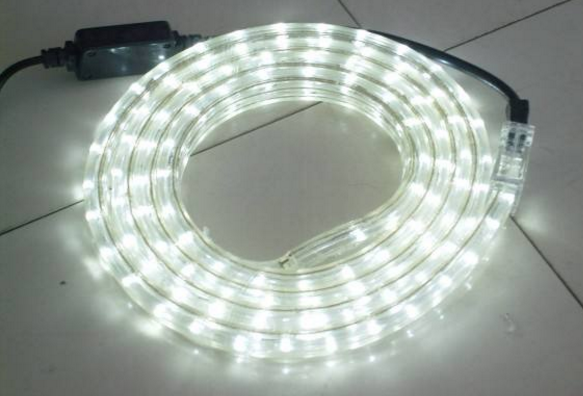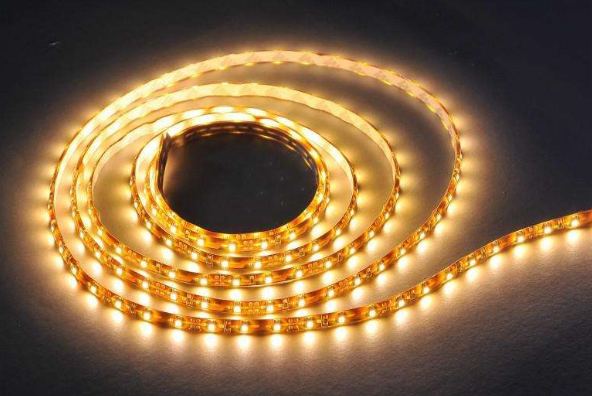Guide: LED light strips have become a popular choice for decoration, used in various industries and households. In the evening, when you walk on the street, you can see a variety of shapes and styles of LED lights. These lights have now become a common part of everyday life. However, many people are not familiar with how to install an LED light strip properly. Improper installation can significantly affect the performance and lifespan of the product. So, how exactly should you install an LED light strip, and what should you be careful about during the process? Let’s take a closer look at this LED light strip installation guide and learn more below.

LED Light Strip
How to Install an LED Light Strip
1. First, determine the length of the LED light strip you need to install. Since each strip is usually 1 meter long, it's best to cut it in whole numbers. This ensures that the circuit remains intact and the strip functions properly. If you cut it randomly, it might cause some sections not to light up. For example, if you need 7.5 meters, you should purchase 8 meters of the strip.
2. When installing, pay attention to the polarity of the LED strip. LEDs are diodes that require DC power, so they have positive and negative poles. If the polarity is reversed, the strip won't light up. Make sure the connection plug is correctly connected, and if it's not powered, just remove the other end of the strip.
3. The LED light strip comes in a roll, and once unrolled, it may become distorted. To make it easier to install, lay it flat and place it into a light trough. Since the strip is single-sided, uneven placement can lead to inconsistent brightness, especially around corners.
4. There are clips available on the market specifically designed for installing LED light strips, often referred to as "light belt companions." Using these can greatly improve both the appearance and functionality after installation.
LED Strip Installation Guide
The LED light strip installation guide includes the following steps:
1. Indoor Installation: Installing LED strips indoors is relatively simple since they don’t need to withstand harsh weather conditions. First, clean the wall surface where you plan to attach the light strip. Remove any dust or dirt that could interfere with the 3M adhesive tape. Ensure the surface is smooth and clean; otherwise, the strip may fall off over time. Each LED strip comes with a self-adhesive 3M double-sided tape on the back. Simply peel off the protective layer and stick it in place. Avoid bending the strip directly over the LED components to prevent damage. Be cautious of static electricity during installation and avoid using sharp objects or touching the strip with your hands. Also, avoid contact with strong chemicals like acids or alkalis. For ceiling installations, consider the weight of the strip and the pulling force from the wires. Fix the strip every half meter using a slot, and ensure that the area where the strip is taken out is secured within 0.3 meters. For corners or long stretches, LED strips can be easily cut and adjusted as needed. Each segment consists of three LEDs in a series-parallel configuration, allowing for individual cutting and use. Always avoid placing metal or conductive objects near the strip and the wall surface, as this could cause short circuits.

LED Light Strip
2. Power Connection Method: Most LED strips operate on 12V DC, so a switching power supply is required. When connecting multiple strips, follow this formula: (Power Supply Rated Power × 80%) ÷ (Power per Meter of Strip) = Maximum Number of Meters That Can Be Controlled. It's recommended not to connect more than 5 meters of strip in series before connecting to the main bus. For better control, it's ideal to use a centralized power supply for multiple strips. For instance, one power supply can handle a 20-meter strip, and a 50-meter system can be powered by three power supplies connected in parallel. This setup allows for easier installation and centralized control. However, it may limit the ability to individually control or adjust the lighting of each strip. Adjust according to your specific needs.
3. Bus Connector and Wiring: Before connecting each LED strip to the main power supply, make sure the terminals are correctly set to DC 12V. Never connect it to 220V AC, as this will burn out the strip. Always double-check the wiring and test the power before finalizing the installation.
4. Common Issues and Solutions: - If a section of the strip doesn't light up, check if the wiring is reversed or if there is a soldering issue. If the wiring is correct, check the solder points. - If only part of the strip is not lit, replace the faulty section with a new one from the manufacturer. - If a section appears dimmer than others (e.g., 30-40% brightness), it may be due to a short circuit in the solder joint or a parallel connection with the bus. Alternatively, the power supply may not be providing enough voltage. If the output is only 7-8V instead of 12V, replace the power supply immediately.
4.Can be used for spraying, sowing, and fertilizing
Agriculture Sprayer UAV,Agriculture sowing Drone,Agricultural fertilization drone
Jiangsu Yunbo Intelligent Technology Co., Ltd , https://www.fmodel-ai.com